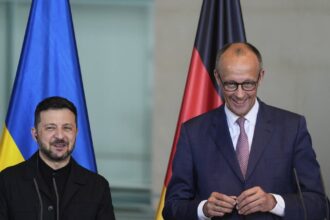In the pre-dawn hours of Wednesday, the first rays of hope broke through the darkness that has enveloped Gaza and Israel for months, as both sides completed a historic prisoner exchange that marks a potential turning point in the devastating conflict.
The carefully choreographed swap saw Hamas release 16 hostages—including 10 Israelis and 6 foreign nationals—while Israel freed 33 Palestinian prisoners in what many diplomatic observers are calling the most significant breakthrough since hostilities erupted in October.
“This exchange represents a diplomatic achievement that seemed impossible just weeks ago,” said Dr. Elana Stein, Middle East policy expert at the University of Toronto. “However, we must recognize it as a fragile first step on what remains a treacherous path to lasting peace.”
The released hostages, many visibly exhausted after months in captivity, were immediately transported to Israeli hospitals for medical evaluation. Among them were elderly civilians and two women in their twenties who had been attending the Nova music festival when Hamas fighters attacked on October 7.
Meanwhile, scenes of celebration erupted in several West Bank towns as Palestinian prisoners returned to their families after years of detention. Many had been held under administrative detention—a controversial practice allowing imprisonment without trial.
The exchange occurred under a U.S.-mediated temporary ceasefire that has temporarily halted the fighting that has claimed over 14,000 Palestinian lives and 1,200 Israeli lives since October, according to health authorities from both sides. The agreement also facilitated the entry of humanitarian aid convoys into Gaza, where the UN has warned of catastrophic conditions facing the civilian population.
“While aid is finally flowing, the quantities remain woefully inadequate compared to the scale of humanitarian need,” said World Food Programme representative Michael Dunford. “Hospitals lack basic supplies, clean water is scarce, and food insecurity is reaching alarming levels.”
The delicate ceasefire has generally held despite reports of isolated violations, with both Israeli and Hamas officials accusing each other of minor infractions. International monitors remain on high alert as diplomats work frantically behind the scenes to extend the temporary truce.
Canadian Foreign Minister Mélanie Joly called the exchange “a critical moment that demonstrates what can be achieved through persistent diplomatic engagement,” while emphasizing Canada’s continued support for a two-state solution as the only viable path to lasting peace.
The exchange represents just a fraction of the estimated 240 hostages still held by Hamas, and Israel has vowed to continue military operations until all hostages are returned and Hamas’s military capabilities are dismantled. Meanwhile, Hamas officials maintain they will continue resistance until a permanent ceasefire is established and the blockade of Gaza is lifted.
Financial markets reacted cautiously to the developments, with slight increases in regional investment and marginal decreases in oil prices reflecting tempered optimism about regional stability.
As night falls again on the region, the profound question remains: can this fragile moment of cooperation be transformed into sustainable dialogue, or will the cycle of violence resume once the spotlight of international attention inevitably dims?







